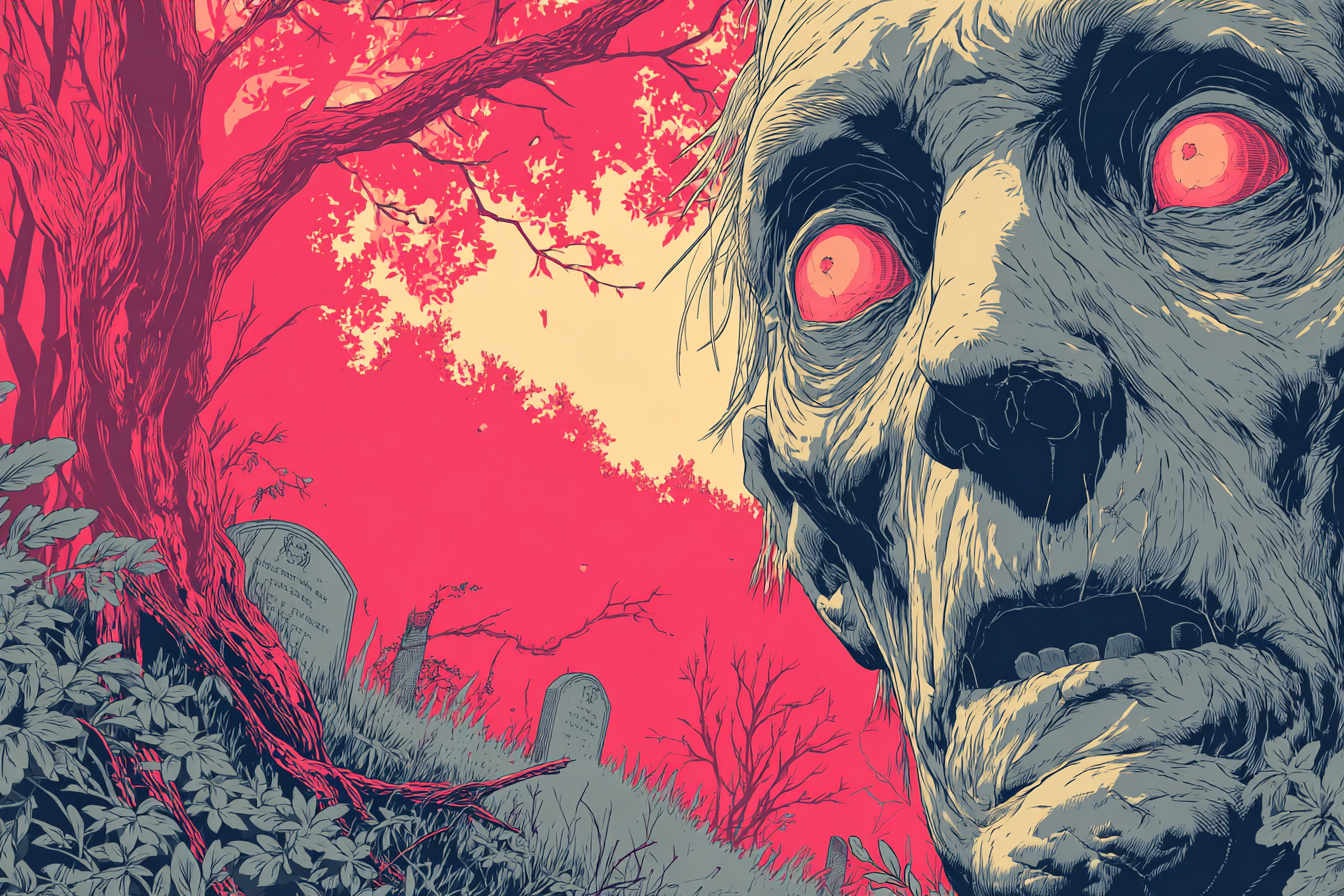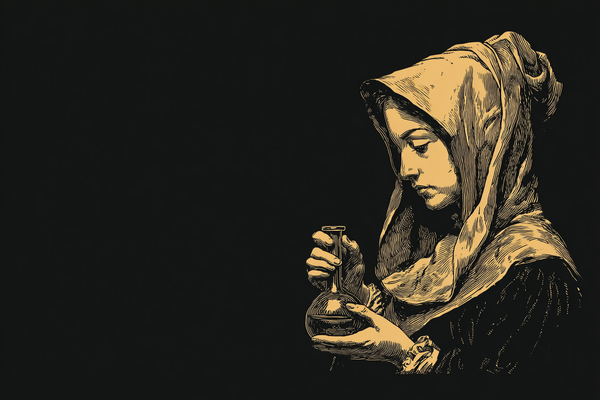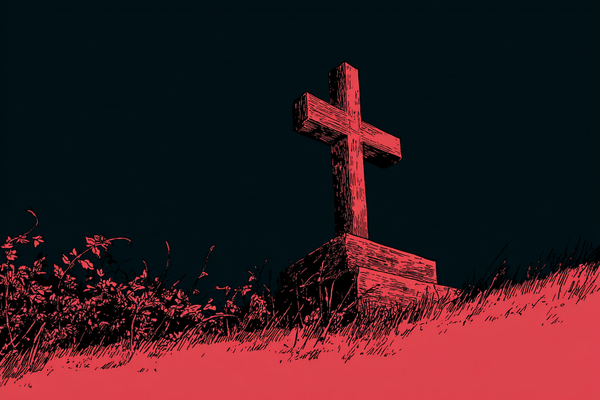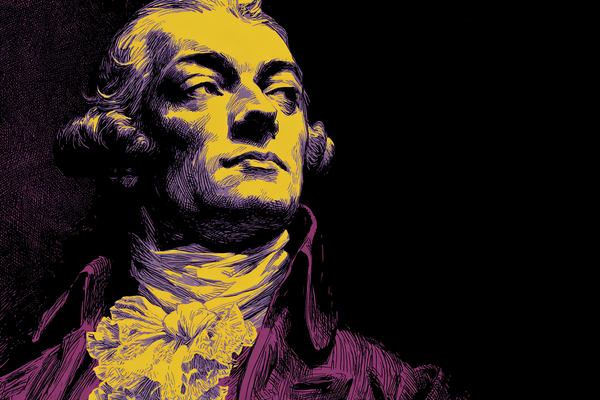Vroucolaca of Mykonos

On New Year’s Day 1701, the French botanist Joseph Pitton de Tournefort—poster child for the new empirical curiosity—stepped into a scene straight out of late-medieval folklore on the island of Mykonos. A quarrelsome peasant had been murdered and buried. Within forty-eight hours, people swore they heard him at night: doors rattled, lamps went out, bottles mysteriously emptied. Whispers hardened into witness. The priesthood convened. And after nine days—per “musty ceremonial,” as Tournefort drily notes—the town exhumed the body to “pull out its heart.” What he watched he called “a very different Scene, and one very barbarous.”
What locals believed they were dealing with
Greeks called such a revenant a vrykolakas (often spelled vourkolakas, vorvolakas, etc.). In Greek tradition this isn’t quite Bram Stoker’s suave blood-drinker; it’s a swollen, drum-taut corpse that roams, bangs, knocks, crushes, vandalizes, and spreads panic—more poltergeist and ghoul than aristocratic vampire. Causes people cited ranged from excommunication or flagrant sin to burial in unconsecrated ground or even eating the meat of a wolf-wounded sheep. Remedies skewed visceral: impaling, beheading, and—above all—cremation. (Saturday was said to be the only safe day to destroy it, when it rested in its grave.)
Those beliefs didn’t appear from nowhere. Seventeenth-century writers in the West were already fascinated by Greek revenants—Leo Allatius gave the first systematic Latin treatment of them in 1645; a Jesuit, François Richard, wrote from Santorini in 1657; and in 1718 Tournefort’s travelogue popularized the Mykonos case across Europe. By the 1730s, encyclopedias were equating the Greek vrykolakas with the rising Slavic “vampire” of Central European news pamphlets.
What actually happened on Mykonos (as an Enlightenment eyewitness tells it)
Tournefort leaves us a tight, almost clinical play-by-play. After day ten’s mass in the chapel, the town butcher “first opens the Belly instead of the Breast,” then—prompted by bystanders—cuts the diaphragm and removes the heart. The corpse reeks; frankincense is burned; smoke, smell and terror snowball into visions; people bawl “vroucolakas!” through the streets; the dissection’s “warmth” and “red” smears of putrefaction are read as proof of unholy animation. The heart is burned by the sea, but reports only intensify: invisible beatings, broken doors, emptied cellars, families sleeping in the square. Tournefort diagnoses it tersely as an “epidemical disease of the brain”—mass contagion of fear. (He also notes local clergy were uneasy about witnessing cremation, which Orthodoxy discouraged.)
Why bodies fooled people: the forensic reality behind the fear
Modern pathology makes Tournefort’s skepticism look prescient. Corpses in the first days can purge dark fluids from the nose and mouth, retain warmth deep in decomposing viscera, bloat with gases until the abdomen is “drum-like,” and seem to have “grown” hair or nails (actually skin retraction). All of these were classic “signs” of vampires recorded across Europe—and they’re all normal decomposition. Folklorist Paul Barber’s work remains the best short bridge between legend and biology.
Why Greece, why then?
Two deep currents mattered in 1701:
- Religious and legal habit. In much of Greece, burial wasn’t automatically “forever.” Graves might be opened after a few years; undecayed bodies could be interpreted as spiritually suspect. That habit of checking on the dead primed communities to discover “evidence” of revenants and to do something about it—up to and including cremation, despite Orthodox reservations.
- A society straddling worlds. The Aegean in 1701 sat between Ottoman administration, local custom, and a church trying to police orthopraxy—while Western Europe surfed the first swell of Enlightenment philology, medicine, and natural philosophy. An educated Frenchman could catalog plants by day and, by night, witness an island’s leaders orchestrate a ritual dissection under the pressure of communal dread. Anthropologists point out that such vampire tales weren’t just “superstition”; they also policed social norms and offered moral causality for misfortune. Juliet du Boulay famously showed how the vrykolakas myth worked symbolically inside village life—restoring threatened order even as it terrified.
How the Mykonos panic echoed outward
Tournefort’s published account became a touchstone for generations of readers—including Lord Byron, who cites “honest Tournefort” in the notes to The Giaour when invoking Levantine vampire lore. Through such citations, Greek revenants flowed into the bloodstream of Western Gothic, helping seed the literary vampire that would later don a cape, buy a castle, and learn to pick locks.
What to make of it now
The Mykonos vrykolakas is a perfect pressure-test for an age that thought it was becoming “modern.” You see the collision: empirical observation versus communal ritual; sanitary fact versus sacred fear; a surgeon’s knife versus a butcher’s blade. You also see how quickly collective imagination can convert ambiguous sensations—smell, smoke, warmth—into certainty, then into action.
And yet the community’s response, grim as it looks, wasn’t mindless. It was a culturally intelligible attempt to solve an emergency with the tools at hand: processions, fasting, holy water, a post-mortem. In that sense, the story isn’t just about credulity; it’s about how humans act together when reality feels out of joint—on Mykonos in 1701, or anywhere, anytime.





